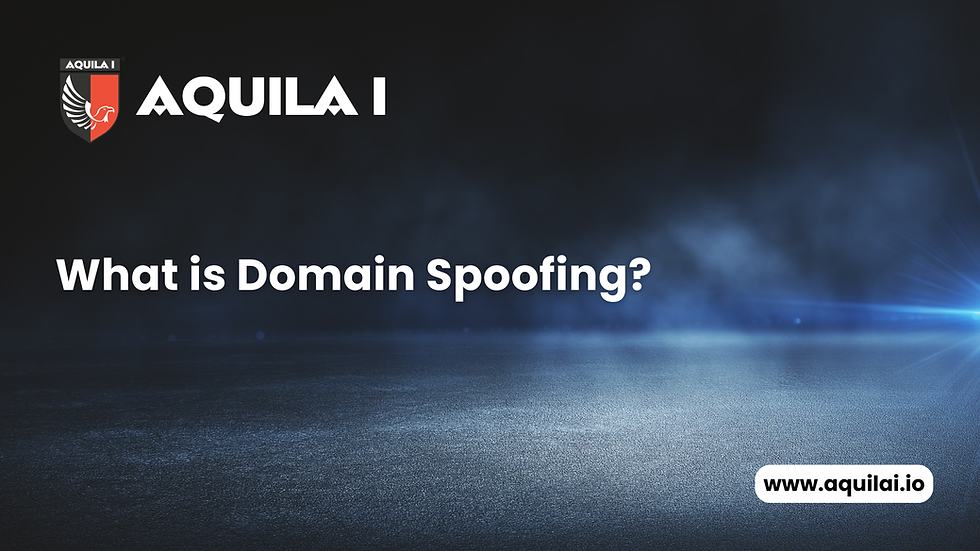What is Cloud Security Posture Management (CSPM)?
- rutujaz
- Oct 14
- 4 min read
The global shift to cloud computing has transformed how organizations build, store, and scale their digital infrastructure. But while the cloud offers agility and cost efficiency, it also introduces new layers of complexity and risk. Misconfigurations, excessive permissions, and unmonitored assets in cloud environments have become the leading causes of data breaches worldwide.
To tackle these challenges, organizations are increasingly adopting Cloud Security Posture Management (CSPM) — a proactive approach that continuously monitors cloud configurations, detects risks, and enforces compliance.
In simple terms, CSPM ensures that your cloud environment is secure, compliant, and aligned with best practices — whether you operate on AWS, Azure, Google Cloud, or multi-cloud setups.
Understanding Cloud Security Posture Management (CSPM)
Cloud Security Posture Management is a security automation solution designed to identify and remediate misconfigurations and compliance gaps in cloud infrastructure.
CSPM continuously checks your cloud assets — virtual machines, storage buckets, databases, APIs, containers — against predefined security benchmarks. When it finds deviations (like open ports, exposed storage, or weak identity controls), it alerts security teams or automatically fixes them.
At its core, CSPM helps organizations answer three essential questions:
Are my cloud assets configured securely?
Am I meeting compliance standards and regulations?
Can I detect and fix misconfigurations before attackers exploit them?
Why CSPM is Critical in Modern Cloud Environments
The cloud is dynamic. New assets are created and destroyed every minute, often without full visibility. According to multiple studies, nearly 80% of cloud breaches are caused by misconfigurations — not by sophisticated hacking.
Key reasons CSPM matters:
Continuous Visibility: Tracks every cloud resource, even those outside IT’s direct control.
Misconfiguration Detection: Identifies risky setups such as public S3 buckets or weak IAM policies.
Compliance Enforcement: Ensures adherence to standards like ISO 27001, PCI DSS, GDPR, and India’s DPDP Act.
Automated Remediation: Reduces human error through automated fixes.
Unified Multi-Cloud Security: Provides a single dashboard across AWS, Azure, GCP, and hybrid systems.
CSPM bridges the visibility gap between security teams, DevOps, and compliance auditors — helping everyone stay aligned.
How CSPM Works
A Cloud Security Posture Management system typically operates through four stages:
Discovery: Continuously scans cloud environments to inventory all assets — including shadow or forgotten resources.
Assessment: Compares configurations against security frameworks (CIS Benchmarks, NIST, ISO, etc.).
Remediation: Suggests or automates fixes to bring resources into compliance.
Reporting & Continuous Monitoring: Provides dashboards, risk scores, and compliance reports for management and regulators.
Advanced CSPM solutions integrate with Security Information and Event Management (SIEM) tools, Cloud Access Security Brokers (CASB), and Continuous Threat Exposure Management (CTEM) frameworks for unified oversight.
Common Cloud Misconfigurations Detected by CSPM
Publicly accessible storage buckets or databases.
Unencrypted data at rest or in transit.
Overly permissive IAM (Identity and Access Management) roles.
Disabled logging or monitoring.
Exposed APIs or endpoints.
Missing backups or disaster-recovery configurations.
Each of these can become an easy entry point for attackers — often without the organization realizing it.
Benefits of Cloud Security Posture Management
Comprehensive Visibility: See all assets, accounts, and configurations across clouds.
Automated Compliance: Map directly to standards like CIS, ISO 27001, NIST, PCI DSS, and DPDP Act.
Reduced Risk of Breaches: Detects and corrects vulnerabilities before exploitation.
Faster Audits: Generates real-time compliance evidence for regulators and customers.
Operational Efficiency: Reduces manual review efforts and human error.
Supports DevSecOps: Embeds security into CI/CD pipelines for secure development.
CSPM is not just a security tool — it’s a strategic enabler of cloud governance.
Challenges in Implementing CSPM
While CSPM delivers significant value, organizations often face:
Tool Overlap: Integrating CSPM with other cloud-native tools.
Complex Multi-Cloud Environments: Each provider has unique APIs and security settings.
Alert Fatigue: Excessive notifications if thresholds aren’t tuned correctly.
Skill Gaps: Teams need cloud-security expertise to interpret results.
Cost Management: Scaling across large cloud footprints can increase licensing expenses.
Overcoming these challenges requires a structured rollout plan, starting with discovery and visibility, then progressing to automated remediation.
CSPM vs. Other Cloud Security Tools
Function | CSPM | CWPP (Cloud Workload Protection Platform) | CASB (Cloud Access Security Broker) |
Focus | Configuration and compliance | Protecting running workloads | Controlling SaaS access and usage |
Scope | IaaS and PaaS | Workloads (VMs, containers) | SaaS applications |
Key Benefit | Prevents misconfiguration breaches | Detects runtime threats | Enforces user-level cloud access |
Together, these tools form the backbone of comprehensive cloud-security architecture.
Best Practices for Effective CSPM
Define Governance Policies: Align configurations with business risk appetite.
Adopt Least Privilege: Enforce strict IAM roles and remove unused accounts.
Automate Everything: Use policy-as-code to ensure continuous compliance.
Integrate with DevSecOps: Shift security left — identify misconfigurations before deployment.
Use Multi-Cloud Dashboards: Consolidate alerts from all providers.
Audit Regularly: Review findings with compliance and risk teams.
Link with CTEM: Combine CSPM insights with Continuous Threat Exposure Management for full visibility into exposure-to-remediation cycles.
The Future of Cloud Security Posture Management
As organizations adopt more complex multi-cloud and hybrid architectures, CSPM will continue to evolve:
AI-Driven Insights: Predict configuration risks before they occur.
Context-Aware Prioritization: Focus remediation on the most critical vulnerabilities.
Integration with CI/CD: Security gates embedded directly into code pipelines.
Expansion to SaaS Posture Management (SSPM): Covering SaaS security alongside IaaS and PaaS.
Unified Exposure Management: CSPM merging with CTEM for continuous, adaptive defense.
CSPM is moving from being a “compliance tool” to a real-time risk-management engine for modern enterprises.
Conclusion
Cloud Security Posture Management (CSPM) is essential for ensuring that cloud environments remain secure, compliant, and resilient. By continuously monitoring configurations, automating remediation, and aligning with global standards, CSPM empowers organizations to prevent data breaches before they happen.
In an era defined by hybrid work, cloud sprawl, and increasing regulatory scrutiny, CSPM is not optional — it’s foundational. Combined with Continuous Threat Exposure Management (CTEM) and Zero-Trust principles, CSPM helps enterprises achieve the ultimate goal of modern cybersecurity: continuous visibility, continuous validation, and continuous trust.




Comments